Engaged and inspired workers create winning customer experiences.
Here’s the bottom line: Excellent customer experience (CX) goes hand-in-hand with employee engagement. And, employee advocacy is a pre-requisite for customer advocacy.
Why? Because inspired and empowered employees go the extra mile to delight customers. They bring more creativity and enthusiasm into the organization, which supports problem-solving and innovation. And inspired employees are three times more productive than their dissatisfied peers.
Yet only 19% of employees are truly satisfied and inspired at work, according to Bain research.
That’s a lot of room for improvement. So, once again, companies need to measure what matters. To create compelling CX, companies need to evaluate employee sentiment and listen to their employees.
EX is a critical driver of CX
Managers review important metrics daily, sometimes even hourly. But most companies defer employee engagement to a quarterly or annual survey. And then, it can take weeks or months to tabulate the results and distill the feedback into actionable themes. Meanwhile, employees (and customers) are suffering.
Companies need faster and more direct ways to get critical feedback about employee experience (EX). For example, the Net Promoter System® for People uses short monthly surveys and in-person pulse checks to collect and act on employee feedback in the right moments.
eNPS measures retention and advocacy like NPS, but it also goes deeper. Superlative EX requires employees to be enthusiastic, not just content or mildly happy in their jobs. eNPS uncovers whether employees feel inspired at work, which is akin to the “self-actualized” pinnacle in Maslow’s hierarchy of needs. When employees love their company, they bring energy, enthusiasm, and creativity to the workplace. Inspiration is the gateway to employees’ discretionary energy—and exceptional CX.
Research shows a strong correlation between customer NPS and employee NPS (eNPS)—and we argue they are explicitly connected. When employees are strong advocates for their company (i.e., would recommend and want to stay), the mood is contagious. In addition, CX is heavily influenced by employees’ motivation, enthusiasm and the level of service they provide.

How to unlock energy, enthusiasm, and creativity
So, how do you unlock employee inspiration? Three levers turn the flywheel of customer and employee advocacy. To earn customer advocacy through EX, brands need to:
- Establish a new employee value proposition—To stave off the “great resignation,” most companies are competing on material offerings: bonuses or salaries, flexible schedules, and other office perks. Those scratch the itch momentarily, but don’t encourage long-term loyalty. Companies need to offer employees more connections instead.
Employees need purposeful work. They need to belong to a community and feel valued by their teammates. And they need a clear picture of how they fit in the company—and can learn and grow—through their work. Employees need to feel secure and deeply committed to the company (their team and its customers) to go “above and beyond” and inspire advocacy.
- Connect EX and CX journeys—As one global banking executive said, “We can’t have a good relationship with our customers without engaged employees.” Companies need to look at their customer journeys and find places where EX intersects. Because they are correlated, these introduce win-win opportunities for brands.
To use the retail banking environment as an example, employees need proper training and technology to help customers complete transactions and make informed decisions. How you prepare and support employees has a direct impact on CX.
Prioritize the most meaningful intersections and get to the root cause of what “makes or breaks” the experience. In most situations, improvements will run in parallel. Enhancing EX will make the interaction exceptional for customers.
- Learn, connect, and correct—Companies need frequent feedback on employee sentiment to affect change. They should measure employee engagement factors monthly, using brief but direct and anonymous surveys like eNPS.
Employees also need a platform to share their ideas and solve problems. Through weekly huddles or pulse checks, employees should feel free to raise issues, voice complaints, and brainstorm ways to do their jobs better. Frontline employees have a front row seat to customer frustrations, gaps in procedures or training, and other deficiencies that affect customers.
When employees have a platform for upward feedback and can take ownership over solutions, they build deeper connections to the company and become more invested in the outcomes. It becomes “their problem” to solve.

New terms of engagement
Brands need highly engaged employees to deliver differentiated experiences and earn customer advocacy. Like all things culture-related, being customer- and employee-obsessed must start at the top but include every level of the organization.
Senior executives need to set the ambition and “walk the talk” to shift behaviors. Some of the early employee feedback may be tough to handle—but it’s the key to progressing CX, and hard work will pay off.
Related content:
- Net Promoter for People: Give Employees a Voice, Get Their Best
- Net Promoter® for People
- U.S. Employee Engagement Needs a Rebound in 2023 (Gallup)
- Engaged Employees Create Better Customer Experiences (HBR, subscription may be required)
- If You Listen Up, Your Employees Will Step Up (Business News Daily)

